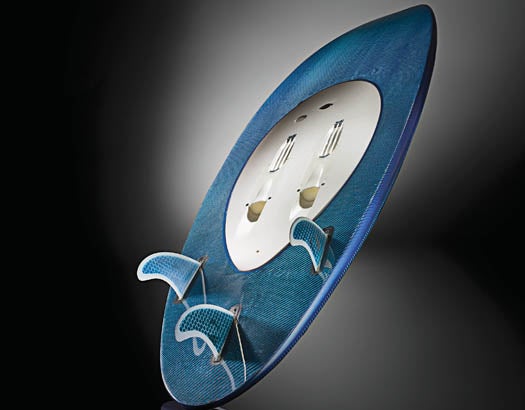Jet-Propelled Surfboard Battles the Breakers
Surfers want to ride waves, not tire out while paddling to them. That’s where the WaveJet comes in. Two battery-powered...

Surfers want to ride waves, not tire out while paddling to them. That’s where the WaveJet comes in. Two battery-powered jets tucked into the shortboard’s three-inch shell provide 20 pounds of thrust to propel riders at 12 mph—three times the average paddling speed.
Unlike a Jet Ski’s circular exhaust nozzles, the oblong ones on the WaveJet save space and add power. By forcing water through smaller, flatter openings, the jets produce a higher-pressure stream. Riders turn the jets on and off with a bracelet remote control that also acts as a kill switch if they wipe out. Because the battery-and-jet module sits just ahead of the fins, where a standing surfer’s weight rests, the 15 pounds it adds only minimally affects the board’s balance and performance.
Although the WaveJet’s power could realistically help pro surfers shred harder, its true purpose is to make water sports less frustrating for amateurs. The board’s propulsion system is currently built into 11 surfboard models, including paddle- and lifeguard boards, and will soon be installed in bodyboards, kayaks and kiteboards as well.
Dimensions: 7.1 ft. x 21 in. x 3.125 in.
Weight: 32 lbs.
Run Time: 39 min.
Price: $4,500 (est.)
More Info: WaveJet